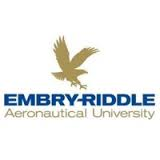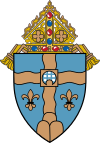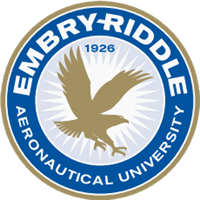What do they do?
Control air traffic on and within vicinity of airport, and movement of air traffic between altitude sectors and control centers, according to established procedures and policies. Authorize, regulate, and control commercial airline flights according to government or company regulations to expedite and ensure flight safety.
Also known as:
Air Traffic Control Specialist (ATCS), Air Traffic Controller (ATC), Air Traffic Manager, Center Air Traffic Controller (Center ATC), Certified Professional Controller (CPC), Control Tower Operator, Enroute Air Traffic Controller (Enroute ATC), Radar Air Traffic Controller, Terminal Air Traffic Control Specialist (Terminal ATC Specialist), Tower Air Traffic Controller (Tower ATC)
-
6.5%
Change
Ranks #18 in job growth rate80Job Openings
Ranks #10 in net job growth
-
Embry-Riddle Aeronautical University-Daytona Beach
Daytona Beach, FL
-
Florida Institute of Technology
Melbourne, FL
-
Community College of Beaver County
Monaca, PA
-
Lewis University
Romeoville, IL
-
University of North Dakota
Grand Forks, ND
Looking for colleges that offer a specific major? Use the College Match Tool to find your best-matched schools and discover your estimated Net Price!
- Doctorate or Professional Degree (2%)
- Master's degree (6%)
- Bachelor's degree (37%)
- Associate's degree (17%)
- Some college, no degree (29%)
- High school diploma equivalent (9%)
- Less than high school diploma (1%)
People in this career often have these skills:
- Active Listening - Giving full attention to what other people are saying, taking time to understand the points being made, asking questions as appropriate, and not interrupting at inappropriate times.
- Speaking - Talking to others to convey information effectively.
- Critical Thinking - Using logic and reasoning to identify the strengths and weaknesses of alternative solutions, conclusions, or approaches to problems.
- Judgment and Decision Making - Considering the relative costs and benefits of potential actions to choose the most appropriate one.
- Monitoring - Monitoring/Assessing performance of yourself, other individuals, or organizations to make improvements or take corrective action.
- Complex Problem Solving - Identifying complex problems and reviewing related information to develop and evaluate options and implement solutions.
- Coordination - Adjusting actions in relation to others' actions.
- Reading Comprehension - Understanding written sentences and paragraphs in work-related documents.
- Active Learning - Understanding the implications of new information for both current and future problem-solving and decision-making.
- Time Management - Managing one's own time and the time of others.
- Social Perceptiveness - Being aware of others' reactions and understanding why they react as they do.
People in this career often know a lot about:
- Transportation - Knowledge of principles and methods for moving people or goods by air, rail, sea, or road, including the relative costs and benefits.
- English Language - Knowledge of the structure and content of the English language including the meaning and spelling of words, rules of composition, and grammar.
- Public Safety and Security - Knowledge of relevant equipment, policies, procedures, and strategies to promote effective local, state, or national security operations for the protection of people, data, property, and institutions.
- Education and Training - Knowledge of principles and methods for curriculum and training design, teaching and instruction for individuals and groups, and the measurement of training effects.
- Customer and Personal Service - Knowledge of principles and processes for providing customer and personal services. This includes customer needs assessment, meeting quality standards for services, and evaluation of customer satisfaction.
- Geography - Knowledge of principles and methods for describing the features of land, sea, and air masses, including their physical characteristics, locations, interrelationships, and distribution of plant, animal, and human life.
- Telecommunications - Knowledge of transmission, broadcasting, switching, control, and operation of telecommunications systems.
People in this career often have talent in:
- Problem Sensitivity - The ability to tell when something is wrong or is likely to go wrong. It does not involve solving the problem, only recognizing that there is a problem.
- Oral Comprehension - The ability to listen to and understand information and ideas presented through spoken words and sentences.
- Oral Expression - The ability to communicate information and ideas in speaking so others will understand.
- Selective Attention - The ability to concentrate on a task over a period of time without being distracted.
- Deductive Reasoning - The ability to apply general rules to specific problems to produce answers that make sense.
- Inductive Reasoning - The ability to combine pieces of information to form general rules or conclusions (includes finding a relationship among seemingly unrelated events).
- Speed of Closure - The ability to quickly make sense of, combine, and organize information into meaningful patterns.
- Flexibility of Closure - The ability to identify or detect a known pattern (a figure, object, word, or sound) that is hidden in other distracting material.
- Perceptual Speed - The ability to quickly and accurately compare similarities and differences among sets of letters, numbers, objects, pictures, or patterns. The things to be compared may be presented at the same time or one after the other. This ability also includes comparing a presented object with a remembered object.
- Time Sharing - The ability to shift back and forth between two or more activities or sources of information (such as speech, sounds, touch, or other sources).
- Near Vision - The ability to see details at close range (within a few feet of the observer).
- Far Vision - The ability to see details at a distance.
- Speech Clarity - The ability to speak clearly so others can understand you.
- Information Ordering - The ability to arrange things or actions in a certain order or pattern according to a specific rule or set of rules (e.g., patterns of numbers, letters, words, pictures, mathematical operations).
- Speech Recognition - The ability to identify and understand the speech of another person.
- Written Comprehension - The ability to read and understand information and ideas presented in writing.
- Category Flexibility - The ability to generate or use different sets of rules for combining or grouping things in different ways.
- Visualization - The ability to imagine how something will look after it is moved around or when its parts are moved or rearranged.
- Auditory Attention - The ability to focus on a single source of sound in the presence of other distracting sounds.
- Written Expression - The ability to communicate information and ideas in writing so others will understand.
- Fluency of Ideas - The ability to come up with a number of ideas about a topic (the number of ideas is important, not their quality, correctness, or creativity).
- Originality - The ability to come up with unusual or clever ideas about a given topic or situation, or to develop creative ways to solve a problem.
People in this career often do these activities:
- Notify others of emergencies, problems, or hazards.
- Communicate with others to coordinate vehicle movement.
- Coordinate flight control or management activities.
- Respond to transportation emergencies.
- Monitor vehicle movement or location.
- Direct vehicle traffic.
- Adjust routes or speeds as necessary.
- Direct emergency management activities.
- Train transportation or material moving personnel.
- Monitor surroundings to detect potential hazards.
- Operate communications equipment or systems.
- Compile operational data.
- Plan flight operations.
- Meet with coworkers to communicate work orders or plans.
- Choose optimal transportation routes or speeds.
- Review documents or materials for compliance with policies or regulations.
- Record operational details of travel.
This page includes data from:

 Occupation statistics: USDOL U.S. Bureau of Labor Statistics Occupational Employment Statistics
Occupation statistics: USDOL U.S. Bureau of Labor Statistics Occupational Employment Statistics









